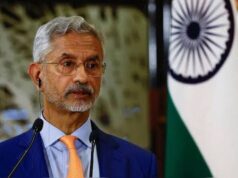‘Real leaders are those who produce other leaders’

Biggest of personality cult politicians need to remember that a tree needs roots to grow
By
Shivam Vij
In 2007, Kumari Mayawati made history. She ended the coalition era in Uttar Pradesh, becoming chief minister with the first clear majority since 1989. The achievement was doubly impressive since Mayawati’s mentor and Bahujan Samaj Party founder Kanshi Ram was no more. This was Mayawati’s victory alone, silencing critics who thought Mayawati won’t go far without Kanshi Ram.
By 2021, we are forced to re-evaluate if 2007 was a flash in the pan. Mayawati is now a distant third in Uttar Pradesh. Why has Mayawati been doing so badly? I put this question to political scientist Badri Narayan, a biographer of Kanshi Ram. He had an unusual reply.
He said Mayawati does not have the knack for producing leaders. “A real leader is a person who has the ability to create other leaders. Kanshi Ram and Mulayam Singh Yadav were factories of leadership.”
Kanshi Ram produced not only Mayawati but also leaders like Masood Ahmed, Om Prakash Rajbhar, RK Chowdhary, Swami Prasad Maurya, Ram Bir Upadhyay, Ram Achal Rajbhar, Lalji Verma, Babu Singh Kushwaha and Sonelal Patel. It is important to mention these names because none of them are with the Bahujan Samaj Party today.
They are with the ruling Bharatiya Janata Party or the Samajwadi Party or running their own small parties. Sonelal Patel became such a tall figure in the Kurmi community that his daughter Anupriya Patel is a minister in the Narendra Modi cabinet. The BJP can’t be sure of Kurmi votes without her.
These names are also important because they signify how Kanshi Ram never intended the BSP to be a ‘Dalit-only’ party. The idea was “Bahujan” — majority, referring to his concept of the majority of the oppressed. Under a Dalit leadership, he intended to take along other “backward” castes as well as Muslims.
The second coming of the BJP in Uttar Pradesh since 2014 has been enabled partly by poaching a long list of “backward” caste leaders from the BSP.
Mayawati’s authoritarian style, sacking people at the slightest doubt, and the inability to trust leaders, have contributed to her failure to produce leaders. She’s lonely at the top, her aide Satish Chandra Mishra is the only one left around her.
Mulayam’s mini CMs
Mulayam Singh Yadav, like Maywati, has been chief minister of Uttar Pradesh four times. How did he come into politics? He was picked up and promoted by socialist leader Chaudhary Charan Singh, a short-lived former prime minister.
Similarly, Mulayam Singh succeeded by promoting other leaders, whose own votes would bring seats for the party. These leaders also added the votes of the Muslim community and of small caste groups to Mulayam Singh’s Yadav core.
Some prominent leaders produced by Mulayam Singh Yadav include Beni Prasad Varma, Mohan Singh, Om Prakash Singh, Janeshwar Mishra, DP Yadav, Narad Rai, Ambika Chowdhary, and Phoolan Devi. Some of these would be so empowered in their areas that they were known as ‘mini CMs’.
Mulayam Singh Yadav’s son and successor Akhilesh Yadav has belatedly learnt the need to promote local leaders. We see him doing so for the imminent Uttar Pradesh assembly elections, both in within his party and through alliances.
Self-multiplying organisms
This idea of political leaders as self-multiplying organisms is a useful lens to judge politicians and how far they go. In the era of personality cult leaders, we are told that the chief minister or prime ministerial level candidate is all that matters.
The legislators win in the leader’s name. Even a lamp post can win. Or that is at least how top leaders like it. They don’t want powerful local leaders who can challenge them.
Nobody practised this form of leadership better than Indira Gandhi. The culture of undermining powerful local leaders continues in the Congress party even today, partly explaining why the Congress is doing so badly.
The BJP’s phenomenal rise over the last 40 years has happened by producing local leadership at a time when the Congress party has been undermining their own. The credit for this in the BJP goes mainly to LK Advani.
Would Narendra Modi be prime minister today if the BJP hadn’t promoted him in Gujarat or Shivraj Singh Chouhan in Madhya Pradesh or Raman Singh in Chhattisgarh? The list of second-rung leadership created by Advani is a long one.
Is the Modi-era BJP doing the same? You could argue they have created a new pan-India Hindu nationalist icon in Yogi Adityanath. In Uttar Pradesh, they have created a pan-state lower OBC face in Keshav Prasad Maurya. But the evidence from other states is poor. Ask the man on the street to name the current chief minister of Gujarat and you may not get a straight answer. It must be noted that this is not for want of trying.
Didi deepening her roots
As the Trinamool Congress tries to expand nationally, critics are asking if the Bengali-speaking Mamata Banerjee will appeal to the Hindi heartland. People are missing what the TMC is trying to do these days: create local leadership in state after state. Spread the roots and the tree will rise higher.
Another party that aspires to expand nationally, the Aam Aadmi Party, has a poor record in promoting local leadership. Its leader Arvind Kejriwal is as bad as Mayawati in being authoritarian and not willing to trust anyone. This was a major reason why the AAP snatched defeat from the jaws of victory in Punjab in 2017.
Let’s see if he is able to trust his local leadership in Punjab this time.
Source : Gulf News




